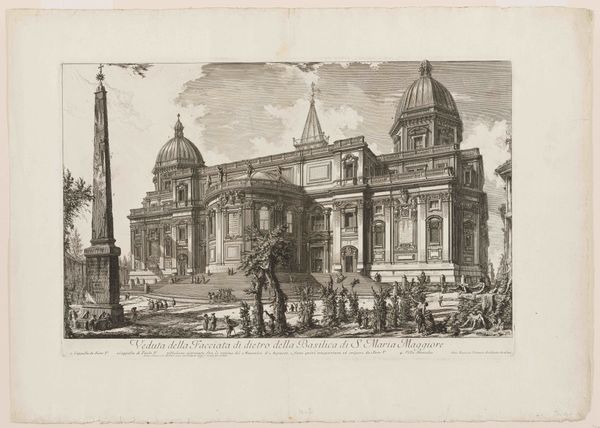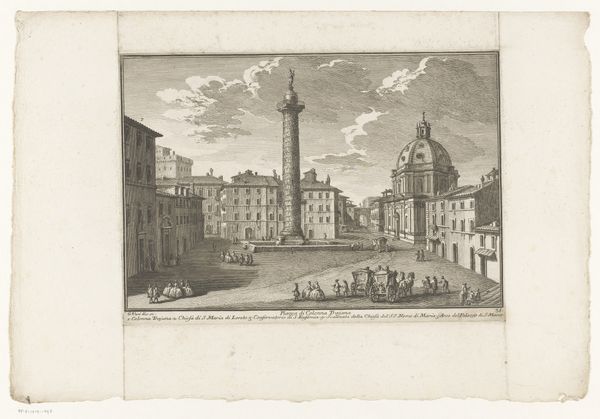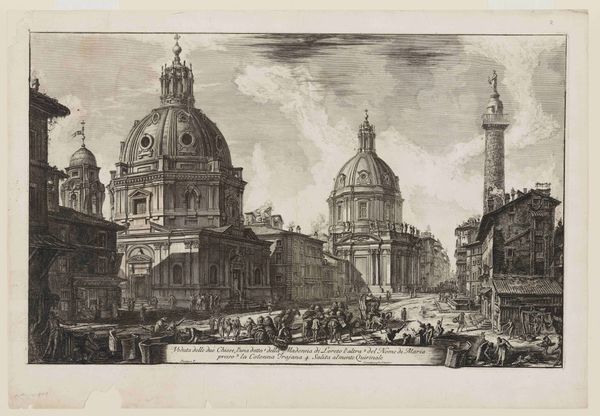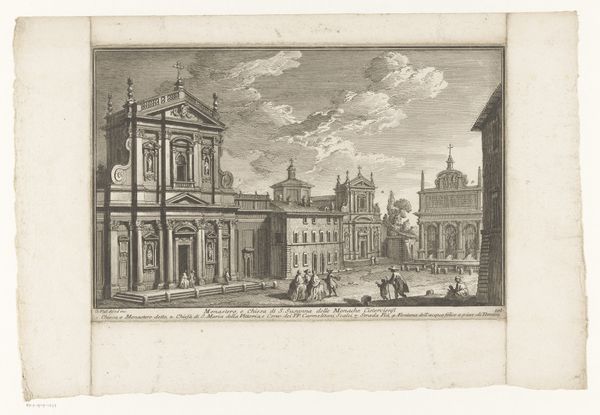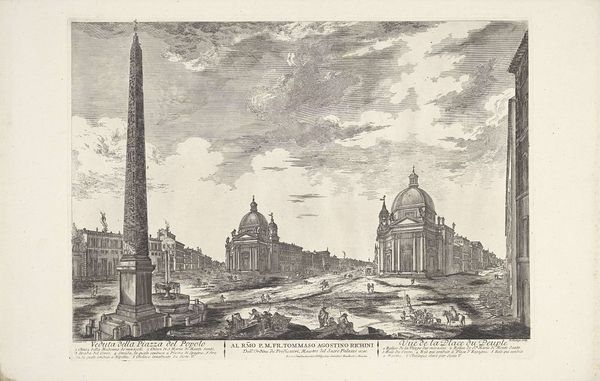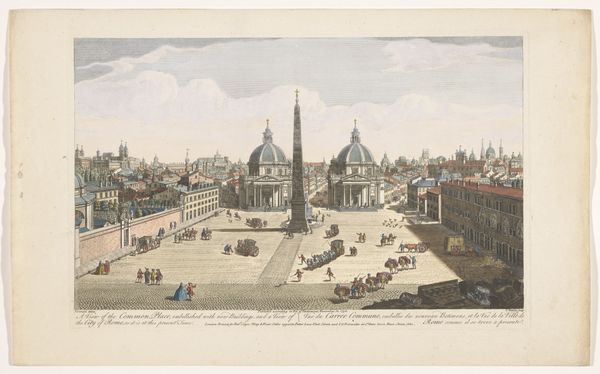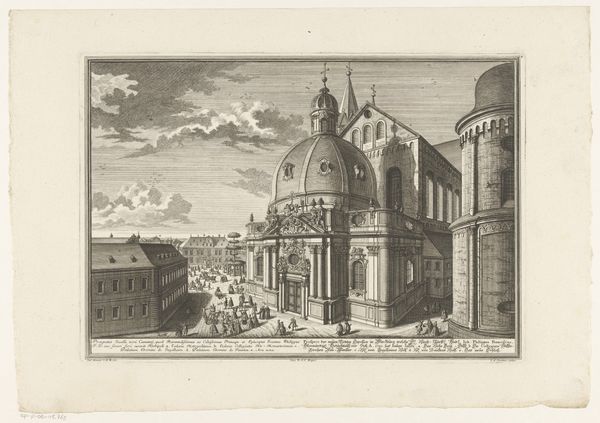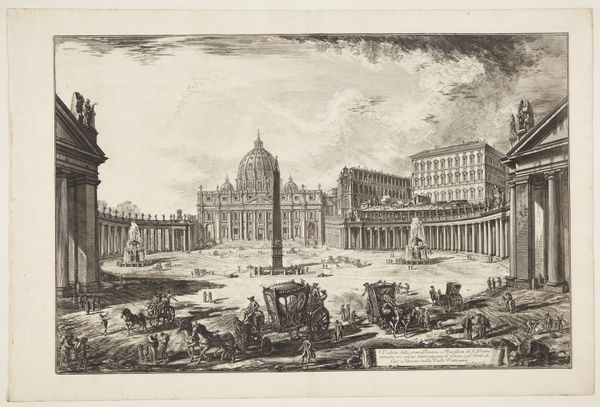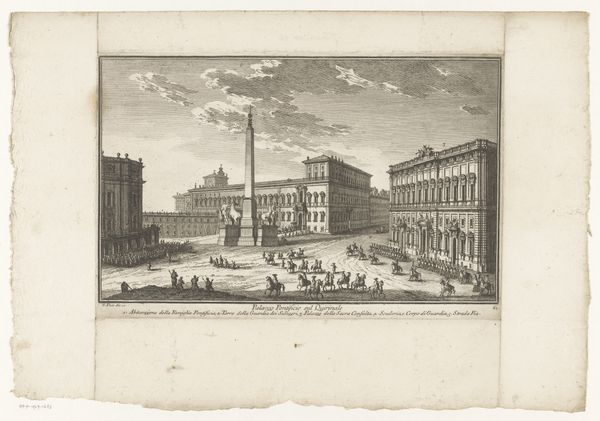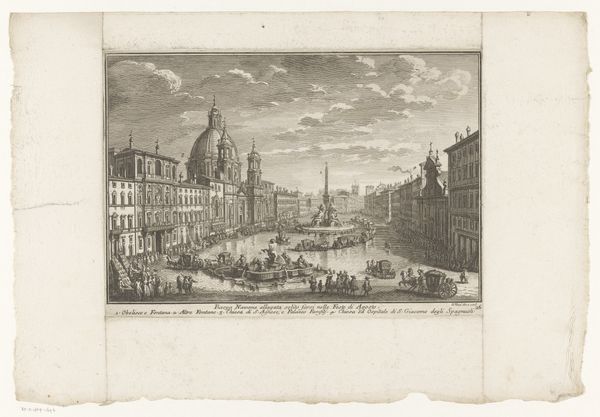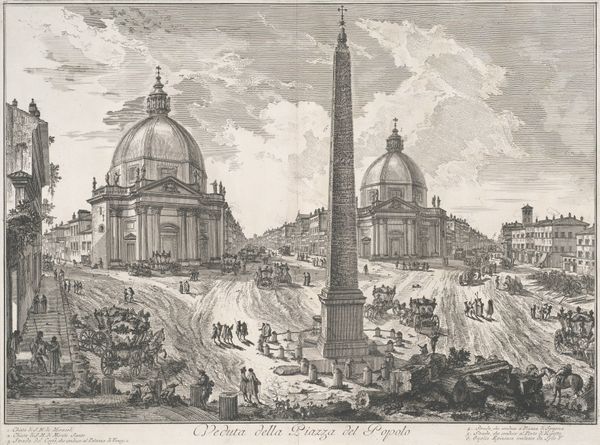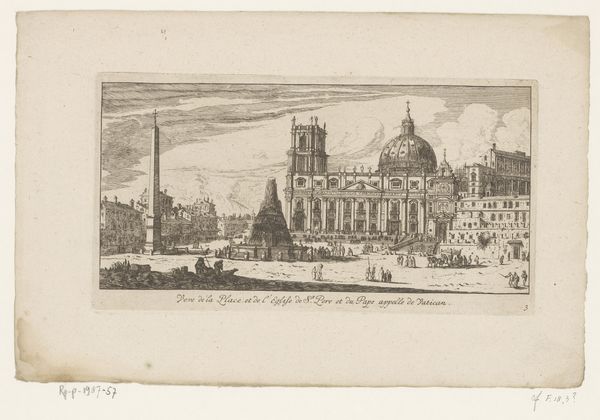
print, etching, engraving, architecture
#
baroque
# print
#
etching
#
old engraving style
#
perspective
#
cityscape
#
history-painting
#
italian-renaissance
#
engraving
#
architecture
Dimensions: height 210 mm, width 324 mm
Copyright: Rijks Museum: Open Domain
Editor: This is Giuseppe Vasi's "Piazza del Popolo te Rome," created between 1747 and 1761, using etching and engraving. The precise detail and almost photographic perspective give a sense of bustling city life. What historical context shapes our understanding of this work? Curator: It's a brilliant question. Rome, at this time, was undergoing intense urbanization projects initiated by the papacy, keen on cementing its power through spectacular displays of architectural prowess. The Piazza del Popolo, strategically located at the city's northern entrance, served as a stage for these ambitions. What social hierarchies are subtly reinforced within these cityscapes, reflecting the relationship between the Catholic Church and Roman people? Editor: That's fascinating. I notice the obelisk in the center, almost dwarfing the figures below. It certainly feels like a declaration of power. Curator: Exactly! The obelisk, an ancient Egyptian artifact, was re-erected here, signifying the triumph of Christianity over paganism – a theme that resonates deeply within baroque Rome. Consider the visual language being deployed. How does Vasi's perspective choices place the viewer within this carefully constructed power dynamic, participating in and implicitly supporting it? Editor: So, Vasi’s detailed depiction, while seemingly objective, actually reinforces the power structures of the time? Curator: Precisely. His meticulousness can be read as both documentation and endorsement, subtly guiding viewers to accept the prevailing socio-political order. It prompts us to examine how art can serve as both a mirror reflecting societal norms and a tool reinforcing them. Editor: This makes me rethink how I perceive historical cityscapes! I hadn't considered how perspectives could contribute to the construction of power and influence. Curator: Indeed. By questioning these seemingly neutral depictions, we unravel the layers of ideology embedded within them and expose silent narratives of past times.
Comments
No comments
Be the first to comment and join the conversation on the ultimate creative platform.
